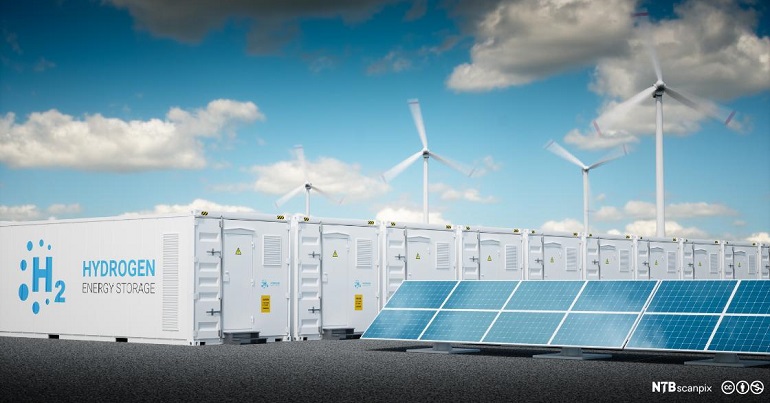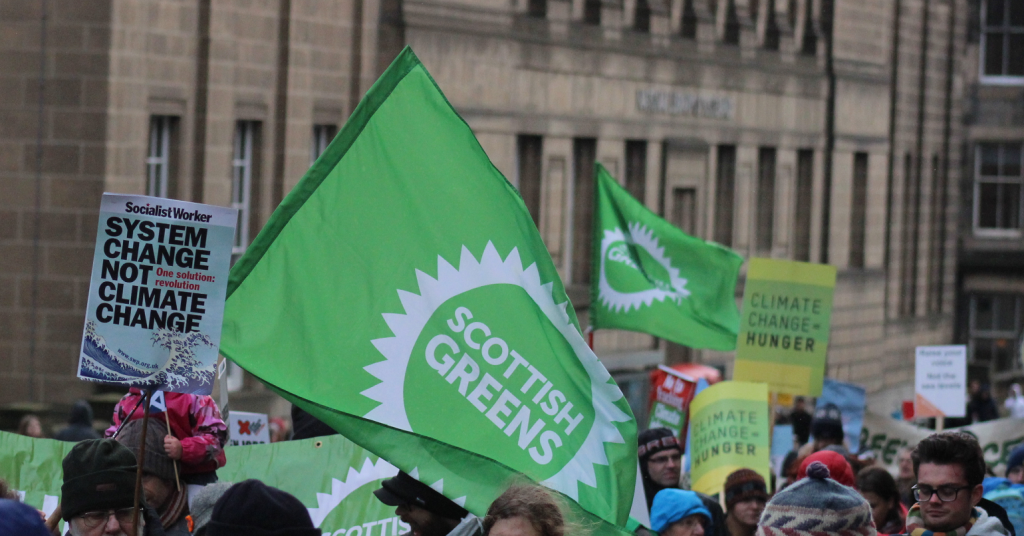Hydrogen: Shortcut to decarbonisation or crutch for the fossil fuel industry?

Hydrogen has long been touted as the fuel of the future – the great hope of the energy sector rising on repeated waves of hype. Yet as recently as 2017, hydrogen was barely a blip on the energy policy radar.
Fast forward to 2021 and we could see £100 billion spent on developing hydrogen, and the industry is set to be worth $475 billion by 2030 according to McKinsey with Bank of America predicting $11 trillion by 2050. On December 1, it was announced that Fife would be the first place in the world to be heated by fully renewable hydrogen. This emerging industry is inextricably linked with a potential emerging vision of energy transition.
But drilling down into the numbers – what are the real prospects of hydrogen playing a major role in a transition away from a carbon-intensive economy?
Where is hydrogen
Most potentially isolatable hydrogen on earth is found in water. On it’s own it is a highly flammable source of energy. However, extracting hydrogen from water is rarely used as the means to obtain it, as doing so requires a considerable quantity of power. The other, cheaper method is steam reformation produced by separating hydrogen during the burning of natural gas and coal.
Hydrogen v electricity
Hydrogen, as Eu commissioner for a Green New deal, Frans Timmermans put it “is not the silver bullet” but nevertheless plays a pivot role in the fight against climate change. At the moment, we know how to decarbonise electricity to a reasonably effectively degree using power sources such as wind, solar, hydro and controversially – even nuclear.
However, this is only one of the UK energy carriers, the others being natural gas (used for heating and cooking), oil (used for petrol and much transport). One solution to these processes is to electrify everything, an approach that even has it’s own hashtag. This brings considerable efficiency gains in some sectors, but comes with its own challenges – notably the need to construct significant amounts of new infrastructure. To electrify the heating of the entire UK is a massive task requiring 4 million new heat pumps by 2030 according to the committee on climate change. Another problem is that not everything can be electrified including a number of industrial process, as well as any transport of a heavy item that requires a high degree of energy density. Commercial electric planes, shipping and even large trucks remain largely speculative.
Finally, mass electrification leads to a massive electricity demand increase. With a more variable grid meeting that sort of demand reliably requires massive dramatic increases in renewable capacity, large connections to the European grid and effective means of electricity storage. Batteries could be part of the storage solution, but they can only efficiently store power for a limited time. Pumped storage, Europe’s main existing form of energy storage is only suitable for a limited number of sites.
Hydrogen has the potential to be used for industrial purposes, with there already being a pilot project using hydrogen for steel plants in Sweden. As a gas it could replace natural gas heating with only a limited retrofit, and modelling of this has already been done in Leeds. A much-hyped American firm is building large hydrogen trucks.
A hydrogen world
There is a vision behind this of an energy system, where when we have surplus renewable electricity it is used to generate hydrogen. It is a world that seems to be on edge of coming into being. In this world, hydrogen could be used to also balance the grid when we have a massive shortage of variable generation. It is a vision of the world than some of the largest renewable energy lobbies are enthusiastically backing.
An additional benefit of hydrogen is that it is transportable. This would mean that places that lack renewable energy resources could effectively buy in energy from places with energy in abundance. Australia, hardly a climate champion, has signed a deal to transport hydrogen to Europe.
However, hydrogen is tricky to transport, it needs to be stored at temperatures of less than –253 C degrees and at high pressure. Far better to transport it as ammonium (stored at less than -20 degrees) and then convert it back to hydrogen – all of which has significant ramifications for energy use.
At this point concerns may be rising. A hydrogen world is potentially a vastly energy inefficient one.
The problem of scale
At the moment the European union has 1 gigawatt of hydrogen electrolysers, with an aim to increase this to 6 gigawatts. For comparison peak German electricity demand is around 70 gigawatts. Less than 0.1% of hydrogen is produced by renewable power. In Germany, the cheapest way of producing in hydrogen remains coal and gas as shown in figure. Germany is planning to spend €9 billion on hydrogen, France €7 billion, Spain €8.9 billion, and the UK just £28 million.
Even with all this government funding hydrogen is likely to be a scare resource, at least for the next few decades.
Is hydrogen a screen to hide the fossil fuel sector?
It is notable that some of the groups most keen to push hydrogen are gas firms, with companies including Shell and Total being members of the Hyrdogen Steering Council. The gas sector owns the pipelines that could be used to transport hydrogen. As the main and cheapest producers of hydrogen, they stand to benefit from subsidies. Greens have been critical of hydrogen on exactly these grounds and have argued that greater focus should be on electrification.
Hydrogen is where we are heading
The quantity of government money and private sector interests means hydrogen will grow and be a major feature of our energy system, albeit not at the speed and scale that its most enthusiastic proponents suggest. The decision that will determine this technology is being made now. With focus, it can contribute to a decarbonised world. Without focus, it risks being another key mechanism for propping up the fossil fuel industry.
PS. We hope you enjoyed this article. Bright Green has got big plans for the future to publish many more articles like this. You can help make that happen. Please donate to Bright Green now.
Image credit: Leverandør – Creative Commons




There is no other option to decarbonising all sectors of energy use, other than manufacturing green hydrogen from low-carbon electricity generation (L-CEG). The installed capacity of current electricity generation for any nation will have to go up by a factor of 3X or even 4X and all generation will have to be from low-carbon sources by 2050.
The 2 L-CEG technologies which, in most nations, will work side-by-side, at least for a decade or two, are wind and solar plants (WASPs) and nuclear power plants (NPPs). The EU has member nations, particularly France, insisting that NPPs be included in the ‘mix’, while others, in particular Germany, are insisting only WASPs should be considered.
German’s Minister for Energy has already said that, just as Germany has to import it’s oil and NG to supply its other energy using sectors, so it will have to import most of the green hydrogen it will need to replace these – plus replacing its current huge use of its own coal in electricity generation. The effect on Germany’s BOP doesn’t bear thinking about; it has already committed €2 billion of its €9 billion green hydrogen plan, to import Morocco’s ‘sunshine’ in the form of green hydrogen, via an existing NG gas pipeline under the Mediterranean Sea.
On the other hand, France will build on the success of its NPP generation which, among developed nations, puts it second only to Sweden, in terms of GHG emissions per capita. It will produce its own green hydrogen from a build out of its NPP fleet, with only microscopic extra land use and environmental impact. It will dramatically cut its oil, NG and coal and will economically flourish, in stark contrast to the economic sufferings of Germany.
Within a couple of decades, however many TWh of L-CEG any nation needs, if committing to net-zero by 2050, it will be demonstrably obvious it can be done, using advanced NPPs, for at least 1/4 of the cost of attempting the same using WASPs.
Search for: £18.47 billion every year-FOREVER!!!
Massive overproduction of Green Energy => Electrolysis of water => Hydrogen + Oxygen as a fuel source
Hydrogen + Oxygen => Energy with a by-product of water
What’s not to get enthusiastic about that?
Except that maybe the current fossil fuel companies are moving in that direction and will be the ones who profit.
But that’s an issue of capitalism and fair distribution of wealth not how we’re destroying the planet.
Save the planet first then we have a chance to argue about wealth distribution.